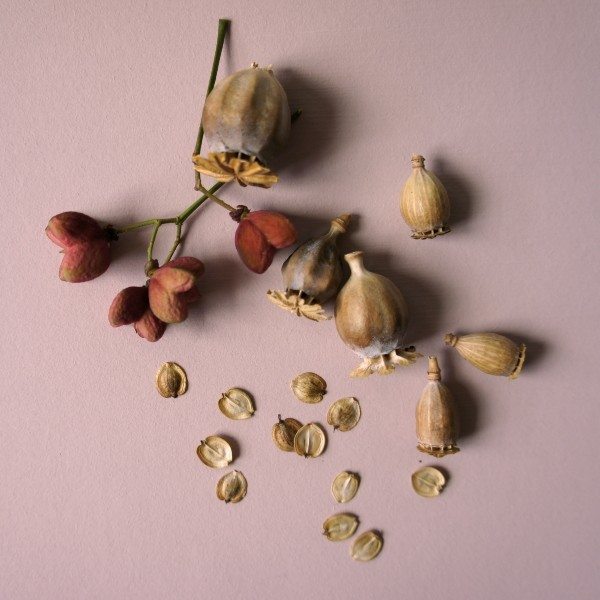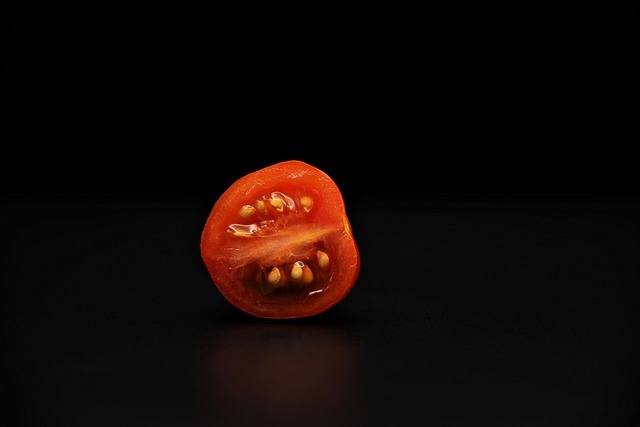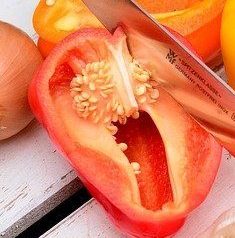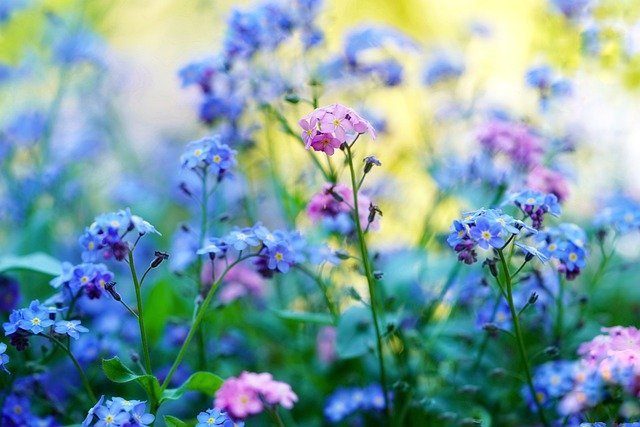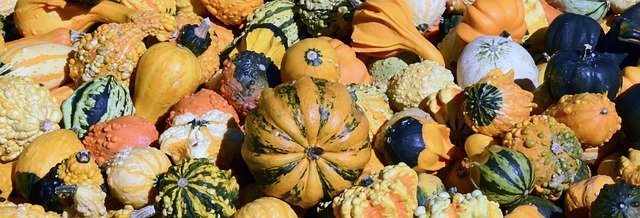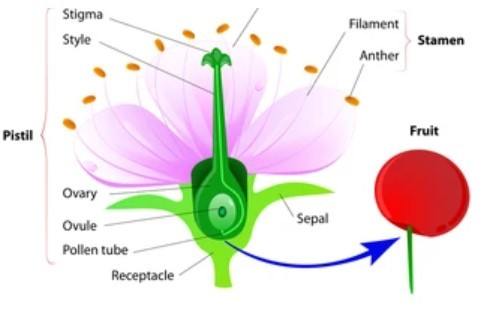How to Dry Seeds: What & Why

Photo Curtesy of Natascha Maksimovic
This week’s guest blogger is no other than my wife Lynda. Lynda helps me produce a lot of the content for Blended Tribes and has an extensive background in gardening, if it can be grown, she can grow it.
She handles most of the seed harvesting around our place, so I thought who better than to write our first post on saving seeds, Lynda take it from here…
Sunflowers and Pumpkins
I grew up on a little farm with a big garden, and I remember my parents saving seeds, especially from sunflowers and pumpkin plants. My parents would set aside enough seeds to plant the next year and then we'd roast the remaining seeds for snacking. Great memories!
I have been collecting seeds of all kinds for years, and I'm always interested in growing my seed library. Building my seed library has given me a sense of food security and independence from the corporate seed companies.
I try to keep the process of saving seeds organized and straightforward. The most important thing is to remember to label the envelopes you place the seeds in; it sucks to go through harvesting seeds then later not be able to identify them.
In this blog post, you will learn how to harvest seeds, from the tiny to the hearty peas in their pods. You'll learn what you need to do to dry your precious seeds and how long to dry them. I explain how to use a lunch paper bag to collect seeds from flowers. I will cover cross-pollination, how to encourage it and how to avoid it. You'll learn about a seed's embryonic and how it protects seeds. Find the definition of a hybrid and much more!
The DO's and DON’T’s of Harvesting Seeds
So, the DO's & DON'T's are pretty simple:
DO: Do dry the seeds, but…
DON'T: Don't over-dry them—a retention rate of between 5 and 8 percent for most seeds is acceptable.
DO: I recommend only saving open-pollinated seeds, never F1 hybrids. F1 hybrids are corporately produced seeds that combine two parent plants. They can produce seeds resistant to disease, pests, bolting and produce heavy yields, yet they can also be infertile, which equates to no seeds for you.
DO: Only save seeds from your healthiest, most robust, tastiest plants. Tomatoes, peppers, beans, and peas are good choices for seed saving.
DO: Do plant older saved seeds. Planting old seeds is entirely okay to do. The seeds from plants from previous years will produce just as good a harvest as fresh seeds.
DO: Save seeds from tomatoes, peppers, peas, and beans; They are some of the simplest plants to deseed, and the seeds consistently produce healthy plants in successive years.
DON'T: I don't recommend that you don't save seeds from vegetables in the squash family. The same variety will rarely grow the following year, and what does grow can be inedible.
You Must Sacrifice Some Seeds to Replenish Your Library. You Don't Get to Eat the Vegetable and Save the Seeds.
The Difference Between Annual, Biennial, and Perennials
- Annual plants produce seeds and die in a single growing season.
- Biennial crops produce seeds that take two seasons to produce a new seed. For example, carrots or beets are more difficult to save because you need to keep the plants at optimum conditions for two years. For instance, you are growing them with or without sun, watering when necessary, and applying fertilization.
- Perennial flowers produce seeds annually and survive for many years.
Here are some instructions for harvesting seeds from some of the most common plants:
Harvesting Seeds
How to Harvest Tomatoes Seeds (Berries & Wet Fleshy Fruit)
Wet fleshy fruit often requires a few more steps to remove the seeds. The gooey fluid that surrounds the seeds can be challenging to remove.

Cherry Tomato
To remove the gooey liquid:
- Make sure you are using ripe fruit
- Put seeds and pulp into a glass jar. Cover the jars opening with a cheesecloth or paper towel and a rubber band. The mixture is going to get a little stinky.
- Let it sit for a few days but whirl the jar daily.
- After 3-4 days, drain the water and rinse the seeds in a fine strainer.
- Lay them to dry on a paper towel.
- Store in an envelope in a dry, cool place after seeds are completely dry.
- Don't forget to label seeds!
Tomatoes are also known to volunteer and produce fruit all by themselves. Last year I received more tomatoes off my volunteer tomato plants than I did from the nursery-bought starts I planted.
How to Harvest Peppers Seeds

Red Pepper
- To tell when a pepper plant is fully ripe, it should be firm to the touch and have turned into the expected color.
- Cut open the pepper, scrape out the seeds, and lay them out on a paper towel to dry.
- To avoid the tiny seeds from getting brushed away, set them away from high traffic areas.
- Store in an envelope and a dry, cool place.
- Remember to label seeds!
How to Harvest Peas and Beans Seeds

Pea Plant

Green Bean Plat
- Peas and Beans need to be ripe and will indicate so when they begin to turn brown.
- Gather the bean and lay them out on a tray.
- Leave them for two weeks before shelling their pods.
- Use envelopes to keep seeds in an airtight container and store them in a dry place.
- Don't forget to label the little fellas!
How to Harvest Seeds from Flowers

- Place flowers headfirst down inside a paper bag with the stems coming out of the top.
- Leave the flowers in the bag for 2 to 3 weeks.
- Then, reach into the bag and pull the seeds out of the dead flower; the seeds will fall to the paper bag's bottom.
- Place in a labeled envelope and store.
How Insects Play a Role in Cross-Pollination
Insects pollinate by going from plant to plant, feeding on the plant's pollen. The pollen sticks to the insects' bodies and then it gets transferred to the next plant and so on.
Common insects that cross-pollinate include:
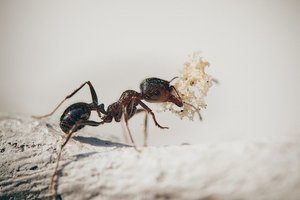
Ant
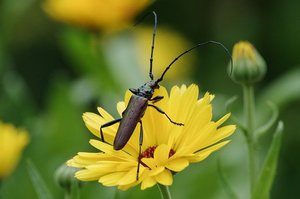
Beetle
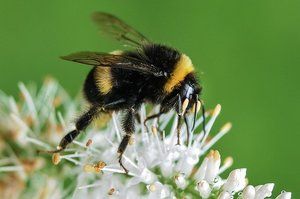
Bumblebee
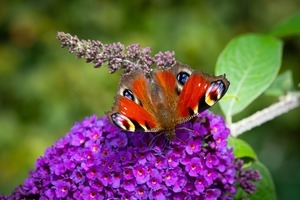
Butterfly
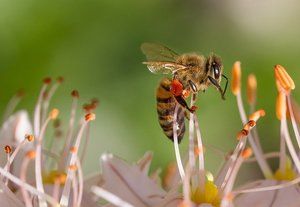
Honey Bee
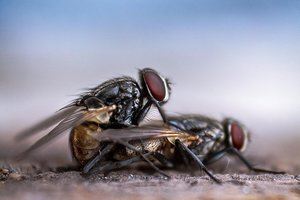
Houseflies
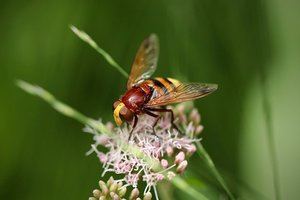
Hoveryfly
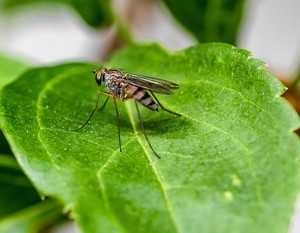
Mosquito
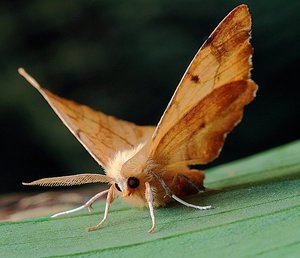
Moth
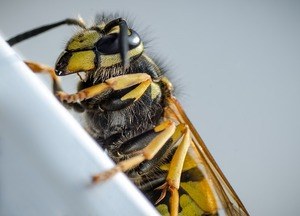
Wasp
Be sure to welcome those insects that, without charging us, volunteer to pollinate our fruits, vegetables, and flowers. So, the next time you see a pesty fly or wasp in your garden, step aside and let the little guys do their jobs.

Common plants insects can cross-pollinate.
- Cucurbitaceous (Gourds, Squash & Pumpkin)
- Melons
- Cucumbers
- Corn
To avoid cross-pollination, grow only one species simultaneously, for example, cucumbers, corn, squash, and melons.
Strange Can Be Good Though
Cross-pollinating can also turn out strange vegetables. One year I had an acorn squash cross-pollinate with zucchini, and it was one fat zucchini-squash. When I prepared the zucchini-squash for dinner I noticed how big the seeds were; that's when it dawned on me the seeds look like acorn squash seeds. Fortunately, the casserole that I made with my unique zucchini-squash turned out delicious!
Where Do Seeds Come From?
Male and Female Plants Get it on by Cross Pollinating.
Let's start with pollination.
Pollination happens when male plants release pollen close to female plants causing female plants to produce seeds.

The pollen grain on the Stigma grows a little tube down the Style, a structure found within the flower that connects the Stigma and the Ovary. The tubular growth carries a male gamete to hook up with a female gamete in an ovule.
Gamete: sex, or reproductive, a cell containing only one set of dissimilar chromosomes, or half the genetic material necessary to form a complete organism
The fertilized ovule continues to form a seed. The Seed has a food store and an embryo that will grow into a new baby plant later. The seeds embryonic includes its cotyledons, the seeds coat. The coat keeps the embryonic plant protected, acting as a shield.
How is a FI Hybrid Different than an Open-Pollinated Seed
F1 Hybrid
F1 means a first-generation hybrid seed that has been successfully cross-pollinated with a plant from another genetic variety. Put merely; hybrids are a cross between two different plants.
The Seed from a hybrid type can be saved but will not be true to type; if you take a seed from a plant grown from a hybrid, it's more than likely that the Seed will be sterile. Which means you waited to harvest a crop that never existed.
Open-Pollinated
Open-pollinated varieties may be heirlooms. Gardeners pass these varieties down through the generations.
If adequately isolated from other plants in the same plant species, open-pollinated plants can produce a genetically true to type Seed. Meaning the Seed will turn out to be a plant much like its parent plant.
When you are planting an open-pollinated crop, aim for the biggest harvest you can. Only harvest the most vigorous plants to produce the best yield for next year's crop. Compost the weak and off-type plants.
In my opinion, it's clear to see that open-pollinated plants are the way to go.
Seeds Away!
Saving seeds is not a complicated task to do. By merely following some simple, steps, you can plant your crops from saved seeds every year. You can conveniently store your seeds long-term by placing them into envelopes then into jars and keep them in the refrigerator. Well marked envelopes will help identify them and a jar lid will keep them safe from moisture. Seeds in good condition and stored correctly will last from one year and, depending on the type of plant, two to five years.
Always use open-pollinated plants; never use a hybrid to avoid fertilization. Not to mention you can save the seeds of pollinated plants and repeat every year with guaranteed good healthy, robust crops.
Starting Right Away
If you want to start plants from open-pollinated seeds and want to get started right away, I have purchased these three different brands and can recommend them. Just be sure to store them properly and follow all manufacturers packing directions.
The important thing is to get started. It does not matter if you harvest your own or buy open-pollinated seeds, just start saving. Make sure to only harvest seeds from fruits or vegetable that where started from open-pollinated seeds.
If you start with a set of purchased heirloom open-pollinated seeds, you can be confident that the harvested seeds will produce an edible harvest, and you can begin your own seed-saving cycle.
We need to stay independent of the large corporations and their infertile hybrids. Get your seed library started today so you will have a garden for next year and generations to come.
Happy Seed Saving to you!

